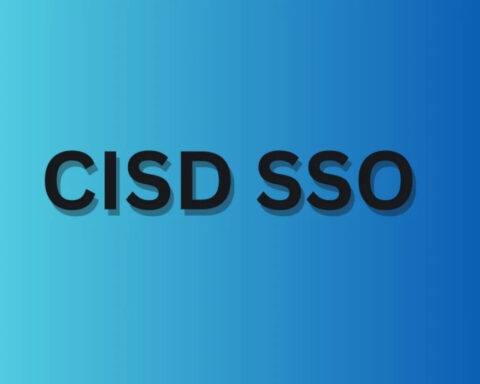As a parent in Singapore, watching your child tackle the PSLE feels like navigating a high-stakes obstacle course. And when it comes to Chinese—the subject that trips up so many kids with its tricky characters, idioms, and oral components—the pressure can really mount. I remember my own niece, back in Primary 6, staring at her composition book like it was written in hieroglyphs. We wanted her to get that extra edge, but our budget was tighter than a bao skin. Sound familiar? You’re not alone. The good news? You don’t have to shell out thousands for top-tier tuition to see real progress. In this piece, we’ll dive into practical, no-fluff strategies for landing affordable PSLE Chinese help that’s actually effective. Let’s break it down step by step, so you can help your kid shine without the financial sting.
Why Bother with Tuition for PSLE Chinese Anyway?
First off, let’s get real: PSLE Chinese isn’t just another tick-box subject. It’s a beast. With sections on listening, reading, writing, and speaking, it demands fluency that doesn’t always come naturally in a bilingual city like ours, where English often steals the spotlight. According to the Ministry of Education’s own stats, a solid grasp here can boost overall scores by 10-15 points—enough to nudge your child into a better stream or school. But school lessons alone? They cover the basics, sure, but they can’t match the personalized drills needed for those pesky cloze passages or situational writing prompts.
That’s where PSLE Chinese tuition steps in. It fills the gaps, builds confidence, and turns “I hate Chinese” into “Hey, this isn’t so bad.” The catch? Premium centres like those in Bukit Timah charge $200-300 a month per kid. Ouch. But hold up—there are smarter paths that keep quality high and costs low. The key is knowing where to look and what to prioritize.
Hunting for Hidden Gems: Where to Find Affordable Options
Start with the basics: decide on format. In-person classes at neighbourhood centres might run $80-150 monthly, but they’re gold for kids who thrive on face-to-face interaction. Places like tuition hubs in Jurong or Bedok often fly under the radar, offering group sessions with 5-8 students. Why groups? Smaller ratios mean more teacher attention without the solo-lesson premium.
Online tuition? It’s a game-changer for affordability. Platforms like SmileTutor or TutorCity list freelance tutors starting at $20-40 per hour. Zoom sessions mean no travel hassles, and you can record lessons for replay—perfect for busy families. I once connected my niece with a part-time undergrad from NTU who charged just $25/hour. She focused on oral practice via mock interviews, and boom—my niece’s confidence skyrocketed.
Don’t sleep on community resources, either. Public libraries host free Chinese workshops through NLB’s “Read! Singapore” program, tailored for PSLE levels. Or check out MOE’s own Student Learning Space (SLS)—it’s packed with interactive modules on vocabulary and comprehension, all gratis. Pair that with low-cost apps like Du Chinese or Pleco ($5-10 one-time), and you’ve got a DIY boost that rivals paid stuff.
Pro tip: Time your search right. Enroll in off-peak terms (like Term 3) when tutors drop rates to fill spots. And negotiate—many independents are flexible if you commit to a package.
Spotting Quality in a Sea of Cheap Deals
Affordable doesn’t have to mean subpar. Here’s how to vet without wasting time. First, credentials matter. Look for tutors with NIE training or at least a strong track record—ask for past PSLE results. A good one should boast 80%+ A/B grades from their students.
Reviews are your best friend. Scour forums like KiasuParents or HardwareZone for unfiltered parent stories. One mum I chatted with swore by a Yishun-based tutor who’d turned her son’s C into an A* using fun mnemonics for idioms. Trial lessons? Non-negotiable. Most offer one for $10-20; use it to gauge if the style clicks with your child. Does the tutor explain errors kindly, or just drill endlessly? Engagement over rote learning wins every time.
Also, align with your kid’s needs. Struggling with compositions? Seek someone strong in creative writing. Oral woes? Prioritize pronunciation pros. Tools like progress trackers or weekly quizzes signal a structured approach, ensuring you’re not just paying for chit-chat.
Stretching Your Budget: Smart Money Moves
Let’s talk dollars and sense. Aim for $100-150 monthly as a sweet spot—enough for twice-weekly sessions without denting your kopi money. Break it down: $50 for group classes, $40 for online supplements, and the rest for materials like past-year papers (grab them cheap on Carousell for under $10).Co-op with other parents. Form a study pod of 3-4 families sharing a tutor; costs plummet to $15-20 per kid per session. Or explore school-based enrichment—many primaries offer subsidized Chinese clubs at $20-30 a term.
Track ROI, too. Set mini-goals, like mastering 50 new words monthly, and review after three months. If scores aren’t budging, pivot—no sunk-cost fallacy here.And hey, empower your child. Involve them in sessions; a motivated kid learns faster, meaning fewer hours needed overall. My niece, for instance, started journaling daily in Chinese after her tutor suggested it. Simple, free, and it stuck.
Real Wins from Real Families
Take Sarah, a working mum from Tampines. Facing a $1,500 monthly budget crunch, she ditched the flashy centre and opted for a $90/month online group. Her son aced his prelims, crediting the tutor’s “storytelling method” for making vocab memorable. Or consider Uncle Lim’s crew in Woodlands—retired teachers charging $60/session in a community centre. They’ve prepped dozens of kids, with parents raving about the “auntie-next-door” vibe that eases exam jitters.
These aren’t outliers. With a bit of digging, families everywhere are proving you can blend quality and thrift seamlessly.
Wrapping It Up: Your Path to PSLE Success Starts Now
Navigating affordable PSLE Chinese tuition boils down to this: be savvy, not spendy. By mixing free tools, group vibes, and vetted tutors, you can arm your child with the skills to conquer that paper—minus the mortgage-level fees. It’s about progress over perfection, confidence over cramming.
So, grab a coffee, fire up those parent forums, and book that trial today. Your kid’s future self (and your wallet) will thank you. What’s one step you’ll take this week? Drop a comment below—I’d love to hear your wins.
Read More Zoeperry









